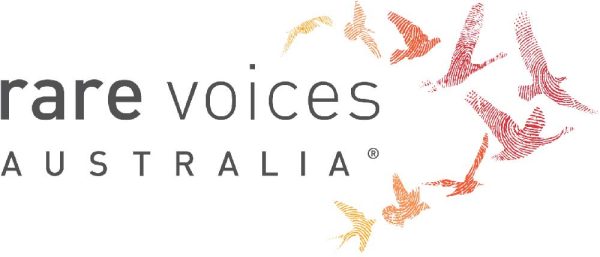Unicentric Castleman disease (UCD)
Quick Search
- Summary
- Synonyms and Classifications
- Symptoms
- Disability Impacts
- Cause and Inheritance
- Diagnosis
- Treatment
- Clinical Care Team
- Clinical Care Guidelines
- Emergency Management
- Research
- Rare Disease Organisation(s)
- Lived Experience
- Support Services and Resources
- Mental Health
- Other Information
- Useful Links for Healthcare Professionals
Summary
Unicentric Castleman disease (UCD) is a type of Castleman disease that is characterised by the enlargement of a lymph node or a cluster of lymph nodes, with distinct features that are only visible when examined under a microscope.1-3 Lymph nodes are part of the immune system and are the home base of immune cells. Unlike multicentric Castleman disease, which involves multiple lymph nodes and can affect other organs, UCD is confined to one area. In most cases, the symptoms are caused by the enlarged lymph node affecting nearby tissues and organs and may resolve with the removal of the affected lymph node.2,4,5
Synonyms and Classifications
Synonyms: CD, UCD, angiofollicular lymph node hyperplasia, angiomatous lymphoid, angiofollicular ganglionic hyperplasia, Castleman tumour, giant benign lymphoma, giant lymph node hyperplasia, hamartoma of the lymphatics.1
Universal rare disease classifications provide a common language for recording, reporting and monitoring diseases. Please visit the Rare Disease Classifications page for more information about these internationally recognised classifications.
ORPHA:93685 Unicentric Castleman disease
ICD-11: 4B2Y Other specified disorders involving the immune system
Symptoms
Symptoms of UCD can vary between individuals. People with UCD usually experience no symptoms.2, 4-6 The affected lymph node/s generally appear as a non-painful lump. Occasionally mild fatigue, aches and pains, and mild anaemia can occur. UCD can cause more severe symptoms when the lymph nodes grow in a way that it physically impacts on nearby organs, blood flow or nerves. The symptoms vary depending on what the enlarged lymph nodes impact.
Please speak to your medical team to learn more about the symptoms and complications of UCD.
Disability Impacts
Rare diseases are often serious and progressive, exhibiting a high degree of symptom complexity, leading to significant disability. Majority of the estimated two million Australians living with a rare disease meet the Australian Government’s definition for disability (in accordance to the Australian Public Service Commission and Australian Bureau of Statistics), and many experience severe and permanent disability impacts. If you or someone you care for is experiencing disability-related impacts from a rare condition, please speak with a health or disability professional for advice. Information about relevant disability support can be found at the RARE Portal’s Disability Support Information page.
Cause and Inheritance
The cause of UCD is unknown.1,2,4,6 There are no known risk factors.
Diagnosis
Diagnosis of UCD may be made based on the results of an excisional lymph node biopsy as well as further tests to rule out other conditions.4
An excisional lymph node biopsy involves the removal of the entire lymph node (either whilst awake under local anaesthetic or asleep using general aesthetic). The lymph node is then examined under a microscope to look for the characteristic changes that are associated with Castleman disease.
A computerised tomography (CT) or positron emission tomography–computed tomography (PET-CT) scan is often performed to look for the presence of other affected lymph nodes in order to differentiate between UCD (only one or one cluster of affected lymph node) and multicentric Castleman disease (multiple affected lymph nodes).4,6
A differential diagnosis can rule out other conditions with similar symptoms, such as multicentric Castleman disease, Hodgkin lymphoma, non-Hodgkin lymphoma, thymomas, systemic lupus erythematous, autoimmune diseases, and acute viral infections including Epstein-Bar virus and human immunodeficiency virus infections.2, 4-7
Please speak to your medical team to learn more about the available diagnostic pathways for UCD.
Treatment
Treatment of UCD may involve removal of the affected lymph node/s. Complete removal of the affected lymph node/s can usually resolve the symptoms associated with UCD. In some cases, removal of the node is not possible and may be treated with medications or radiation therapy to shrink the lymph node.5 Medications may also be used to shrink the lymph node to a size or position that allows it to then be surgically removed.
Please speak to your medical team to learn more about the possible treatment or management options for your condition. Treatment will depend on an individual’s specific condition and symptoms. It is also important to stay connected to your medical team so that you can be made aware of any upcoming clinical trial opportunities.
Clinical Care Team
Clinical care for rare diseases often involves a multidisciplinary team of medical, care and support professionals. Please note that the information provided here is as a guide and that RVA does not necessarily monitor or endorse specific clinics or health experts.
Healthcare professionals involved in the treatment of UCD may include general practitioners (GP), surgeons, paediatricians, haematologists, and oncologists.2,4,8 The need for different healthcare professionals may change over a person’s lifetime and extend beyond those listed here.
Clinical Care Guidelines
We are not aware of any clinical care guidelines for UCD in Australia. If you know of any relevant care guidelines, please let us know via the Contribute page.
The following guidance is available from international experts outside Australia; however, there may be information that is not relevant or applicable to the Australian context, and may not be up to date:
- The management of Castleman disease – a ‘Good Practice Paper’ containing recommendations where there is limited evidence but a degree of consensus or uniformity is likely to be beneficial to patient care; compiled according to the British Society for Haematology (BSH) process and published in 2021
- International evidence-based consensus diagnostic and treatment guidelines for unicentric Castleman disease; published in 2020 by 42 experts from 10 countries that convened to establish consensus recommendations
Emergency Management
Individuals living with rare diseases may have complex medical issues and disabilities, which are not always visible. It is often useful to refer to their medical history as well as personal information such as a medical card, doctor’s letter, or if available, a rare disease passport, for relevant information.
Research
Castleman Disease Collaborative Network: Physicians & Researchers has information on relevant research and resources for Castleman disease.
There are specific considerations around participating in rare disease research, including clinical trials. It is important to be mindful of issues such as data privacy, research ethics, consent and differences in research regulations between Australia and other countries.
If you are interested in finding clinical trials for your condition, please visit the following websites; however, there may not be any clinical trials available:
It is best to discuss your interest in any clinical trials with your medical team to determine suitability and eligibility.
Please note that RVA does not necessarily monitor or endorse each group/organisation’s operational governance and activities.
Rare Disease Organisation(s)
There are currently no known organisations for Castleman disease in Australia. If you are aware of any Castleman disease organisations in Australia, please let us know via the Contribute page. If you are interested in starting an Australian organisation, please see Engaged, Ethical and Effective: A Guide for Rare Disease Organisation Leaders in Australia.
Please note that RVA does not monitor or endorse each group/organisation’s operational governance and activities. When engaging with a group, please consider the information on the RARE Portal’s Finding Helpful Peer and Community Supports page.
Lived Experience
UCD varies between individuals, and each person’s experience is unique.
If you would like to share your personal story with RVA, please visit the Rare Voices Australia: Share Your Story page. RVA will consider your story for publishing on our website and inclusion on the RARE Portal.
Support Services and Resources
For information on available government and social services that provide support for individuals with a rare disease, please visit the National and State Services pages.
Mental Health
People living with a rare disease, including families and carers, often face unique challenges such as diagnostic delays, misdiagnoses, limited treatment options, and limited access to rare disease specialists and support. These challenges may impact people’s emotional wellbeing and quality of life. Many people find it helpful to seek mental health and wellbeing support to cope with ongoing stress and uncertainty. Connecting with people who have shared experiences through a support group may also be helpful. Information about relevant mental health and wellbeing support can be found at:
- Mental Health and Wellbeing Support for Australians Living with a Rare Disease
- The National and State Services pages underneath the ‘Mental Health’ sections listed
Other Information
Further information on Castleman disease can be found at:
Useful Links for Healthcare Professionals
References
- National Organization for Rare Diseases. Castleman Disease. Published 1988-2022. Updated 16 June 2022. Accessed 21 August 2024. https://rarediseases.org/rare-diseases/castlemans-disease
- Castleman Disease Collaborative Network. Accessed 10 August 2024. https://cdcn.org/castleman-disease/
- Orphanet. Castleman disease. Accessed 20 August 2024. https://www.orpha.net/en/disease/detail/160
- Lomas OC, Streetly M, Pratt G, Cavet J, Royston D, Schey S, et al. The management of Castleman disease. British Journal of Haematology. 2021;195(3):328-37. https://doi.org/10.1111/bjh.17688
- van Rhee F, Oksenhendler E, Srkalovic G, Voorhees P, Lim M, Dispenzieri A, et al. International evidence-based consensus diagnostic and treatment guidelines for unicentric Castleman disease. Blood Advances. 2020;4(23):6039-50. 10.1182/bloodadvances.2020003334
- Carbone A, Borok M, Damania B, et al. Castleman disease. Nature Reviews Disease Primers. 2021;7(1):84. https://doi.org/10.1038/s41572-021-00317-7.
- Fajgenbaum DC, Uldrick TS, Bagg A, et al. International, evidence-based consensus diagnostic criteria for HHV-8–negative/idiopathic multicentric Castleman disease. Blood. 2017;129(12):1646-57. https://doi.org/10.1182/blood-2016-10-746933
- Genetic and Rare Disease Information Centre. Castleman Disease. Updated July 2024. Accessed 21 August 2024. https://rarediseases.info.nih.gov/diseases/12656/castleman-disease
Contributors
This page has been developed by Rare Voices Australia (RVA)’s RARE Portal team.
If you are aware of any additional information that may benefit stakeholders with an interest in this page, or if you notice any broken links or inaccurate information, please let us know via the Contribute page.

